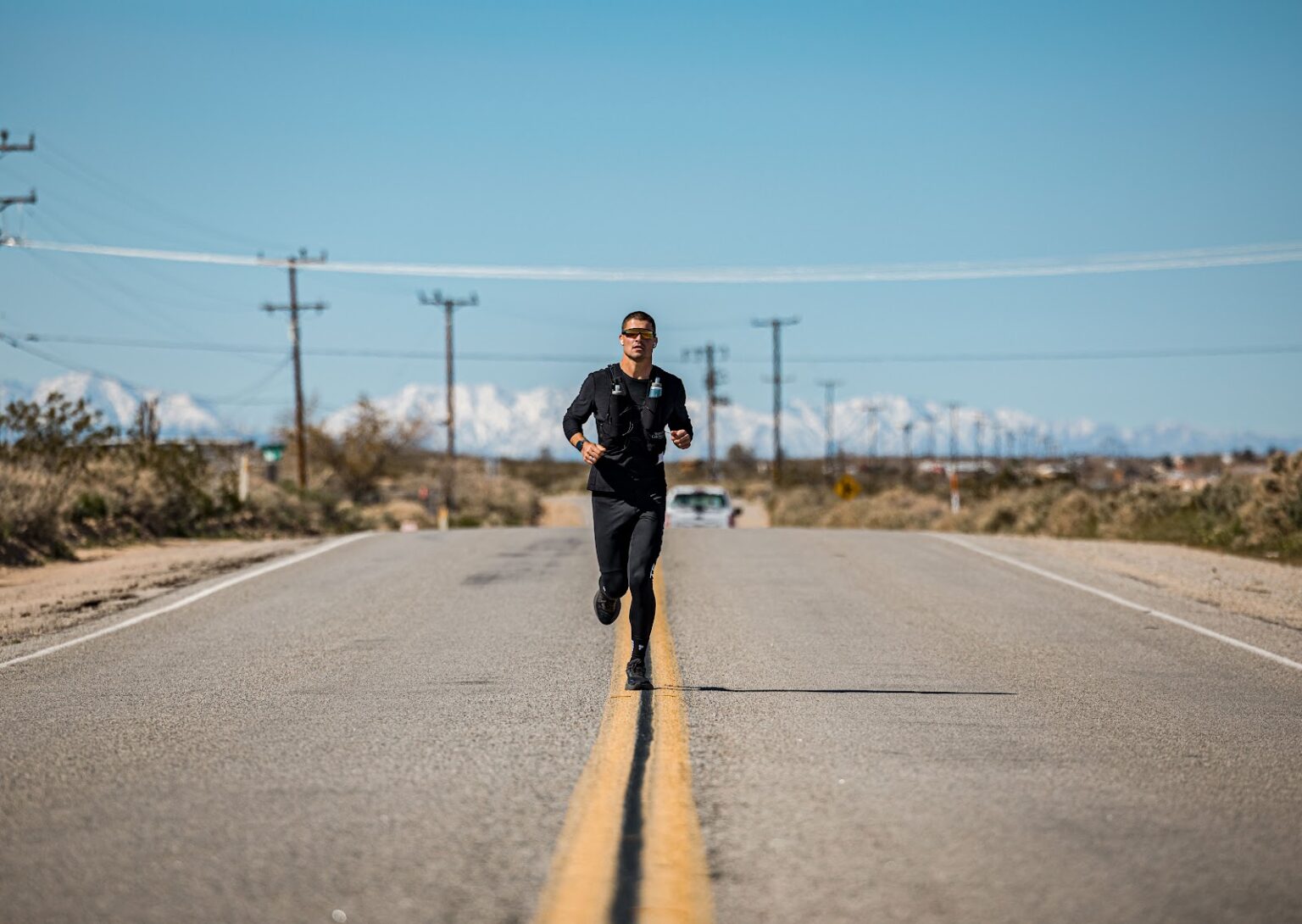British endurance athlete William Goodge is making significant progress in his ambitious attempt to set a new world record for running across Australia, as he approaches the halfway mark of his challenge. Having run over 2,000 kilometers since embarking on his journey from Perth to Sydney on April 15, Goodge aims to complete approximately 4,000 kilometers in 35 days—an ambitious goal that would see him beating the previous record of 39 days and eight hours held by Chris Turnbull.
As he navigates a remarkable daily target of 108-110 kilometers, Goodge emphasizes the nuances of pacing and recovery that can make or break an endurance effort of this scale. For seasoned ultrarunners, understanding the balance between push and recovery is crucial. Goodge’s strategy includes a stark recognition of the physical demands of ultra-endurance running. He notes that on especially taxing days, he might find himself on the trail for up to 16 hours, yet he focuses on the necessity of proper rest and nutrition to prevent entering a recovery deficit. This is a principle that resonates well for those preparing for mountain ultras, where terrain and elevation can throw unpredictable challenges into pacing strategies.
Training for mountainous terrain also requires a keen awareness of both mental and physical conditioning. Goodge reflects on his journey to self-awareness, detailing the profound connection he has cultivated between his mind and body during the run. He points out that while physical capability plays a significant role, the psychological aspect is equally critical—knowing when to push through discomfort and understanding when to conserve energy can define performance in ultrarunning contexts, especially in mountainous environments that often test capabilities beyond just physical limits.
The conditions Goodge faces—hills, headwinds, dirt storms, and even injury—exemplify the relentless nature of endurance racing and require adaptable strategies. His experience of coping with a functioning Achilles injury underscores the importance of attention to biomechanical issues, common in long-distance running. As ultrarunners undertake their training and racing plans, lessons can be drawn from Goodge’s need to manage potential injuries proactively, emphasizing the importance of strength work, flexibility training, and listening to one’s body signals—a strategy necessary for anyone preparing for mountain races where injury management can be the difference between finishing strong or withdrawing from the race.
Goodge’s use of technology in planning his route, such as Google Maps, also highlights a vital aspect of contemporary ultrarunning: navigating and strategizing effectively in vast, often unforgiving terrains. This raises points for consideration regarding gear reliability and the weight of equipment. For runners preparing for similar challenges, meticulous planning around aid stations, crew support, and gear choices cannot be overstated. Goodge’s approach of having a crew with him, including family support, offers tangible insights into the operational aspects of endurance racing that can enhance performance and morale.
Another element worth noting is Goodge’s summation of his daily targets. He mentions needing to average close to 89 kilometers daily to meet his overall objective, a reminder for ultrarunners that adaptive pacing based on daily conditions can mean reevaluating goals mid-challenge. The importance of flexible pacing strategies comes into play, wherein ultrarunners can benefit from adjusting their targets based on a variety of factors, including weather, terrain, and physiological feedback.
In races with elevation profiles, the added complexity of ascent and descent further complicates pace management. Ultramarathon runners must adapt their effort based on the type of terrain they are traversing. Goodge’s experience in tackling variable conditions serves as a relevant reminder for those in mountain ultras—where terrain can shift rapidly and impact pacing significantly. Thus, incorporating diverse training runs that cover various terrains can build resilience and adaptability.
Ultimately, William Goodge’s run across Australia serves as a case study in endurance, strategy, and the mental fortitude required for ultrarunning. His insights on the interplay between body and mind, the importance of strategic rest, and effective routing are all elements that seasoned trail and ultrarunners can apply as they prepare for their own challenges. The pursuit of ultramarathon records illustrates not just physical prowess but the rich tapestry of strategy, planning, and adaptability inherent in the sport.
A key takeaway for ultrarunners, particularly those focusing on mountainous races, is the necessity of an adaptable approach to training and racing—balancing ambition with the reality of ongoing challenges. This mindset, combined with meticulous planning and self-awareness, distinguishes those who merely compete from those who excel within the ultrarunning community.
